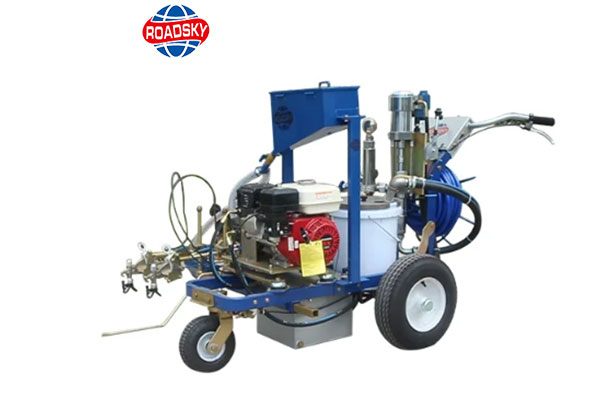Usage and Precautions of Cold Spray Marking Machine
In the realm of road marking technology, cold spray marking machines stand out as a versatile and efficient solution. These machines have revolutionized the way road markings are applied, offering durability, precision, and environmental friendliness. However, like any powerful tool, proper understanding of their usage and precautions is essential to ensure optimal performance and safety.

Understanding Cold Spray Marking Machines:
Cold spray marking machines are sophisticated devices designed for the application of road markings using a cold spray paint process. Unlike traditional methods that involve thermoplastic materials, cold spray technology utilizes airless spraying systems to apply a variety of paints, including water-based and solvent-based formulations, at ambient temperatures.
These machines typically consist of a high-pressure pump, a paint tank, spray guns, and various controls for regulating paint flow and pressure. They offer several advantages over conventional methods, including faster drying times, reduced environmental impact, and enhanced flexibility in paint selection.
Usage Guidelines:
- Surface Preparation: Before using a cold spray marking machine, ensure the road surface is clean, dry, and free from debris. Any contaminants can interfere with the adhesion of the markings.
- Adjusting Pressure and Nozzle: Proper adjustment of air pressure and nozzle size is crucial for achieving the desired thickness and width of the markings. Refer to the manufacturer’s guidelines for optimal settings.
- Application Technique: Maintain a steady and consistent pace while operating the spray gun to ensure even coverage and uniform line thickness. Avoid overlapping passes, as this can lead to excessive paint buildup and uneven markings.
- Safety Measures: Wear appropriate personal protective equipment (PPE), including gloves, goggles, and respiratory protection, to minimize exposure to paint fumes and splashes. Ensure adequate ventilation in enclosed spaces to prevent inhalation of harmful vapors.
Precautions
- Avoid Overexposure: Prolonged exposure to paint fumes and solvents can pose health risks, including respiratory irritation and neurological effects. Minimize exposure by working in well-ventilated areas and taking regular breaks in fresh air.
- Fire Safety: Exercise caution when working with solvent-based paints, as they are flammable and can pose fire hazards. Keep ignition sources, such as open flames and hot surfaces, away from paint storage areas and work zones.
- Maintenance and Cleaning: Regularly inspect and maintain the cold spray marking machine to ensure proper functionality and longevity. Clean the equipment thoroughly after each use to prevent paint buildup and clogging in the pump, hoses, and spray guns.
- Storage and Handling: Store paint and solvent containers in a cool, dry place away from direct sunlight and heat sources. Follow proper handling procedures to prevent spills, leaks, or accidental exposure to skin and eyes.
- Training and Certification: Ensure that operators are properly trained and certified in the safe use of cold spray marking machines. Familiarize them with equipment operation, safety protocols, and emergency procedures to mitigate risks and prevent accidents.
In conclusion, cold spray marking machines offer a versatile and efficient solution for road marking applications. By adhering to usage guidelines and taking appropriate precautions, operators can harness the full potential of these advanced devices while ensuring safety, quality, and environmental sustainability.

